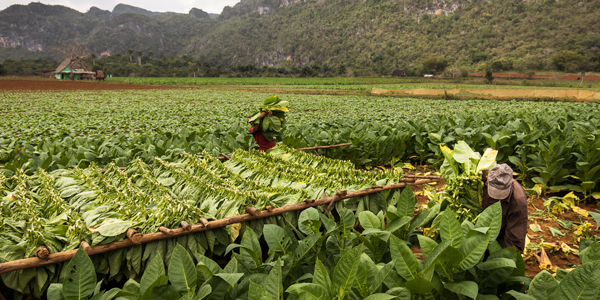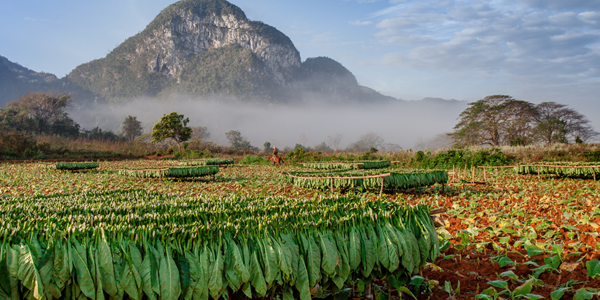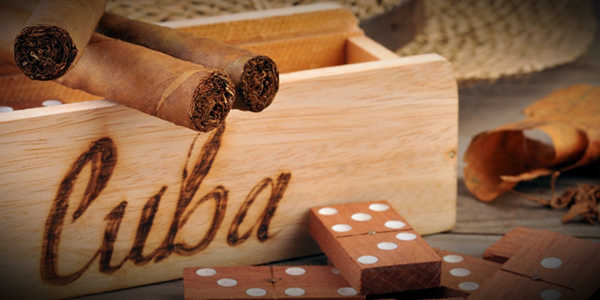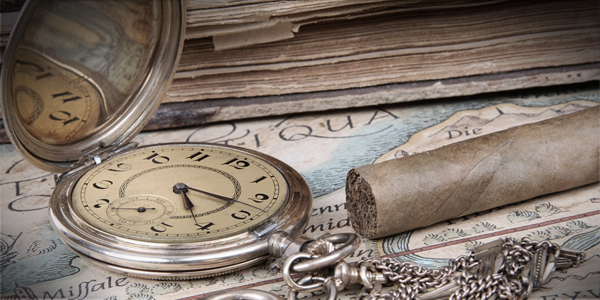Vuelta Abajo, Cuba
Right now, when it comes to visiting Cuba from the United States, it’s kind of a matter of “you can’t get there from here.” At least not easily if you want to travel legally to the island nation that is considered the historic land of cigars. If you are a cigar lover and do happen to make it to Cuba, no trip would be complete without a visit to the fertile tobacco-growing region of Vuelta Abajo, about a two-hour drive from Havana.
What Is Vuelta Abajo?
The Vuelta Abajo (roughly translated into “back down”) region is located in Cuba’s westernmost province, Pinar del Rio. To the north, the province is bordered by the Sierra de Organos mountains. Of Cuba’s five major tobacco-growing areas, Vuelta Abajo is considered the best. The combination of the region’s fertile, red, mineral-rich soil and humid climate result in tobacco that is full of flavor and strength. The full-bodied taste of Vuelta Abajo tobacco comes, in part, from high levels of nitrates in the plants.
Versatility
Of all the areas in Cuba that grow tobacco, Vuelta Abajo is the only one in which all types of cigar leaves – wrapper, binder, and filler – are grown. Within the region, only about a quarter of the territory is considered first class for the cultivation of tobacco worthy of being used in the production of the finer Cuban cigars.
Production Centers
East of the provincial capital city of Pinar del Rio is where the best tobacco land is found. Among them, Vega Vizcaino is famous for its wrapper leaf.
The town of San Luis is the epicenter of tobacco culture in the area. Several famous plantations are found in or near San Luis, among them Vega El Corojo, and Cuchillas de Barbacoa, the farm belonging to the iconic cigar family of the late Alejandro Robaina.
In the southeast of the province, and notable for its natural beauty and tobacco history, you’ll find San Juan y Martínez. This is binder and filler country. You’ll see several tobacco fields with bright green tobacco stalks grown in the sun and the equivalent of small coves where tobacco grows. You’ll also see several fields of shade-grown tobacco with the plants covered with white cloth, or tapados. This is where the famous Hoyo de Monterrey plantation is found and where the eponymous cigars originally were made.
Make These Stops
The first must-visit is the Alejandro Robaina Tobacco Plantation or Finca El Pinar Alejandro Robaina. That’s the name painted on the large tobacco barn that’s visible from the road as you drive up. The traditional name is Cuchillas de Barbacoa. The farm was founded in 1845 and has traditionally grown some of the island’s best tobacco, so good, in fact, that Fidel Castro branded the cigars from the farm with the Robaina family name. This is the only plantation in Cuba to have received that honor. Today, Alejandro Robaina’s son, Hirochi, is the head of the operation.
The other stop to make is at the Quemado de Rubí farm run by Hector Luis Prieto, the youngest ever to win the Hombre Habano award, given annually to the nation’s best tobacco producer. Prieto is well-known for growing excellent shade wrapper. Here you can get a tour in English and ride horses, have lunch, partake in a cigar-rum pairing, and even stay in one of the two wooden cabins. This is eco-tourism at its best for the cigar aficionado. Try to go between November and February, the height of growing season.
Vuelta Abajo Cigars
In the early days, farms in the Vuelta Abajo would produce their own cigars. These days, few cigars are made in the region except for some made on individual farms. The tobacco grown in Vuelta Abajo, however, is used in virtually every Cuban cigar made today.
If you visit, you’ll meet some farmers who will sell you their cigars for a lot less than what you’ll pay in Havana. It’s a way to make a little extra and they’ll cost you a pittance. They don’t sell many as growers must turn over 90 percent of the crop to the state. The Cuban government is the only buyer of the tobacco, even though the farms are technically private, and families have owned them, in some cases, for hundreds of years.






